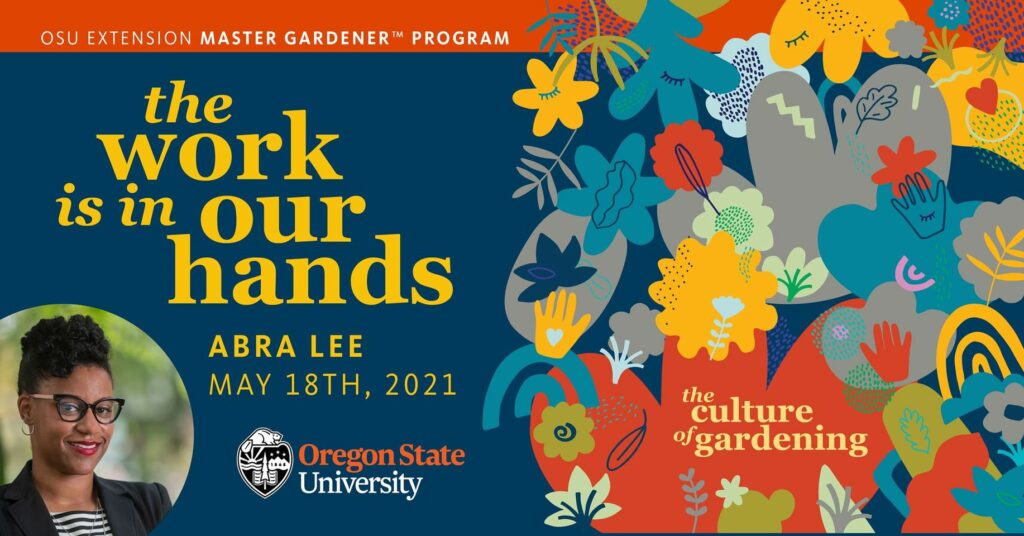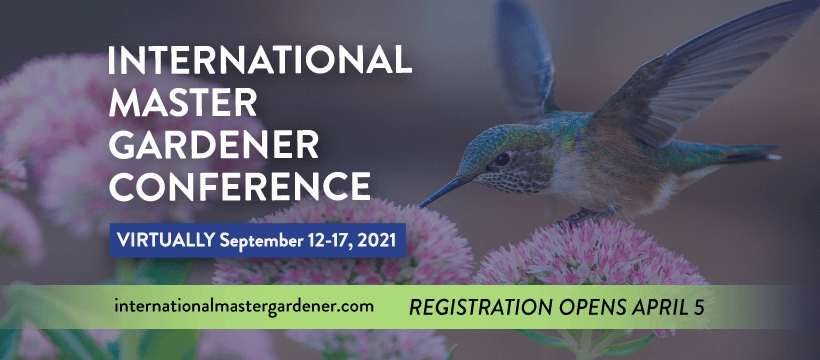Spring’s Earliest Pests: Aphids
Jean R. Natter, OSU Extension Service Master Gardener
After all we’ve been through this past year, what with the COVID pandemic and quarantine, gardeners are getting itchy about planting. I was, too, until the middle of March when night time temperatures dropped into the 20s in mid-March. I imagine it was even colder for many of you.
Even though my dreams of planting soon were dashed – tomatoes, peppers and eggplants need consistent night temps of 50 to 55F – my thoughts soon drifted to insect pests, then to their natural enemies.
The leaders of the potential pest parade will be various species of aphids, also several kinds of caterpillars, the latter specializing on crucifers (cabbage and kale crops), among them cabbage whites (Pieris rapae) and several species of cabbage worms. Unfortunately, various species of both kinds may be present throughout the growing season.
Oh, and let’s remember that slugs and snails are ever-present through the season.
So, let’s review a few things, including safe management.
We should begin with the preferred pest remedy: An alert gardener, ready to spring into action, who knows which natural enemies (NEs) are allies, and who acts promptly. Prompt action, aided by the numerous beneficial insects already present, means pesticides are often unnecessary.
Aphids are small, soft-bodied, pear-shaped pests that tend to cluster on new growth which they sometimes distort as they remove plant sap from plant parts. (If you have roses, you’ll likely see them there first.) Aphids may be almost any color, perhaps even spotted, banded, or striped. Most infest buds, flowers and new leaves, often distorting them which sometimes mimics disease.
Caterpillars, also called chewing worms, are the plant-munching larvae of various moths and butterflies. (More about caterpillars next month.)
Recall that pest control is a lot like mowing the grass; it requires repetition. You get to do it over, and over, and over, again. (sigh)
Always start with the safest methods, namely search-and-destroy missions throughout the garden or ornamental planting. Reserve pesticides for those instances when the pests get out of hand. Always identify the pests and apply the appropriate product only to the hot spots of pest insurrections. Then, too, use pesticides strictly according to label directions.
As you likely know, aphids of one kind or another are present year-round locally. They’re perhaps the most common plant pest you’ll encounter. Aphids pierce plants with their hollow mouthparts to withdraw sugary fluids. Often, they’re undetected until leaves curl or the plant is coated with sticky honeydew (aphid excretions). Repeated sharp water sprays are often sufficient against aphids. Or increase your fire-power with a commercial insecticidal soap such as Safer’s, mixed according to label directions. For soap sprays to be effective, they must contact the pests. No home remedies, please; they may damage plant tissue.
Fortunately, you have lots of free help readily available among insects. Your skilled assistants (the NEs) are typically most active during the morning and late afternoon but hide during the heat of the day.

Ladybugs (aka lady beetles) are the most colorful aphid killers. Most of these ¼-inch, glossy, hemispherical adults are red, often dotted with black. The ladybug’s elongated ¼-inch youngsters are quite different, resembling the tiniest of alligators. Their soft bodies are slate-gray or black with tufts of dull orange hairs. Both adult and child chomp on aphids. In time, even the aphids’ toes will be gone.
In spite of advertising hype promoting sales of ladybugs, realize that they typically leave for other bug-filled garden. But, if you are determined to purchase natural enemies, know that lacewings are more valuable
because their diet is more diverse. After lacewings decimate the aphids, they’ll switch to other small, soft-bodied pests including young caterpillars, various insect eggs, or even mites.

Hereabouts, lacewings are naturally present year-round. You’re most likely to see the fragile, 5/8-inch, filmy-green adults fluttering from shrubs at dusk. The larvae are the aphid eaters, though. Look for 3/16-inch tan or gray, soft-bodied creatures similar to ladybug larvae but with Jaws that resemble old-fashioned ice-tongs. Eggs are easy to recognize, they’re small, greenish-white, and mounted on hairlike stalks.
Worm-like larvae of certain flies also kill aphids. The largest larvae (Syrphid flies, aka flower flies) are about 1/4 inch long but are difficult to spot because of their greenish or grayish color whereas the tiny, almost dot-sized, orange fellows (Midges) are easy to spot because of their color. All such larvae search for lunch by blindly groping. Just as do lacewing larvae, fly larvae pierce aphids, drain them, then abandon the empty carcasses.
Tiny, non-stinging wasps kill aphids, too. After they insert an egg into an aphid, their larva dines inside the aphid as it gradually transforms into a bloated, papery shell. Some weeks later, an adult wasp exits through a circular hole created in the aphid’s empty exoskeleton.
Impatient folks who would rather fight than wait for NEs to break into action need to understand that water,plain, or doctored with insecticidal soap, kills aphids but is safe for most helpful insects. Commercial pesticides are useful for uncontrolled hotspots but most kill more NEs than pests. When a pesticide is needed, consult with a garden center, then always follow label directions precisely. Because sprays rely on contacting the aphids, act before the pests are protected within crinkled and distorted leaves.
Power-assisted blasts can help you gain control quickly.Forceful water sprays are appropriate for sturdy plants whereas gentler handling is better for plants with rather soft tissue, among them such as violas and leafy lettuces. Aphids are so soft and squishy that harsh water sprays will injure them such that they’re unlikely to return to the plant. But, because healthy, intact aphids can give live birth to an aphid every 20-30 minutes, you’ll need to repeat the spray anyway. With more potent products, the goal is to only spray enough to coat the pests.
Realize that plant damage is possible with all pesticides, including soaps.That’s especially true if the spray is applied on a sunny day or was inadvertently – or not — mixed at too strong a rate. It’s always wise to test the spray on a few plants, then check for damage several days later. Browned or burned plant tissue is obviously serious whereas soap smudges are merely unsightly.
Resources:
- Sustainable Gardening: The Oregon Master Gardener Handbook
- Lady Beetles: http://ipm.ucanr.edu/QT/ladybeetlescard.html
- Book: Pests of the Garden and Small Farm (ANR #3332; University of California)- Available at booksellers.
- Book: Natural Enemies Handbook {ANR #3386; University of California)- Available at booksellers.
- A Pocket Guide to Common Natural Enemies [revised 2021] https://catalog.extension.oregonstate.edu/ec16 13
Coming next month: Cabbage Worms and Other Chewers
















